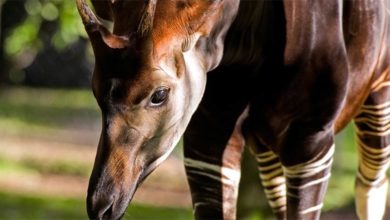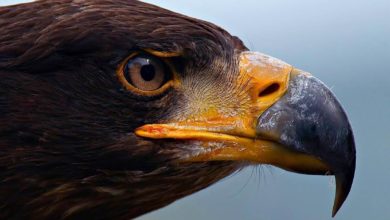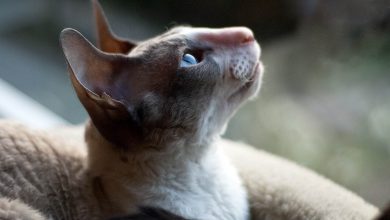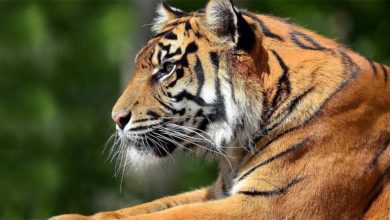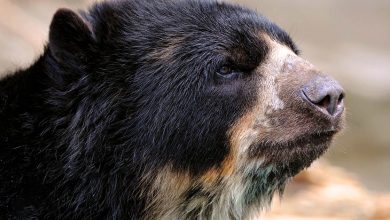Serval (Leptailurus serval)
Smaller cheetah
Smaller than a lion, but certainly more distinguished. A noble appearance combined with graceful movements make the serval one of the most original wild cat in the world. Beautiful markings evoke a royal apparel. Attractiveness is both a gift and a curse for the serval, because it became a “pet”, walking on a leash, taken away from its natural environment.
Classification
- Class: Mammalia
- Order: Carnivora
- Family: Felidae
- Subfamily: Felinae
- Genus: Leptailurus
- Species: Serval (Leptailurus serval / Felis serval / Caracal serval)
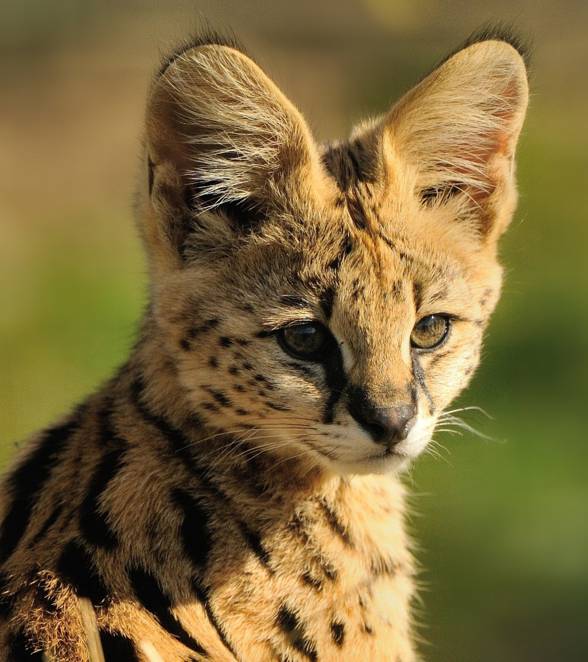
19 subspecies of the serval have been distinguished:
- Leptailurus serval beirae – Mozambique
- Leptailurus serval brachyurus – West Africa, Sahel to Ethiopia
- Leptailurus serval constantinus – Algeria, Morocco and Tunisia
- Leptailurus serval faradjius
- Leptailurus serval ferrarii
- Leptailurus serval hamiltoni – eastern Transvaal
- Leptailurus serval hindei – Tanzania
- Leptailurus serval kempi – Uganda
- Leptailurus serval kivuensis – Congo
- Leptailurus serval lipostictus – northern Angola
- Leptailurus serval lonnbergi – southern Angola
- Leptailurus serval mababiensis – northern Botswana
- Leptailurus serval pantastictus
- Leptailurus serval phillipsi
- Leptailurus serval pococki
- Leptailurus serval robertsi – western Transvaal
- Leptailurus serval serval – Cape Province
- Leptailurus serval tanae – Ethiopia, Eritrea and Somalia
- Leptailurus serval togoensis – Togo and Benin
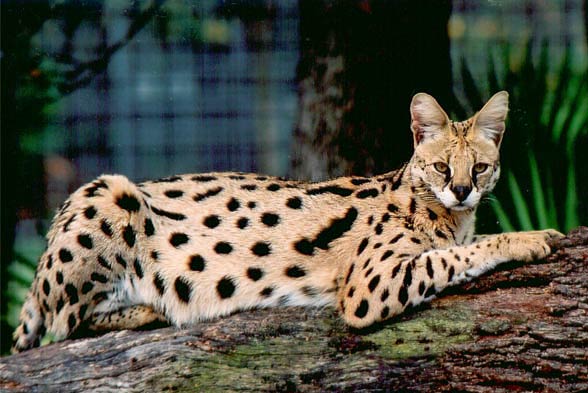
Occurrence
It is found in large areas, south of the Sahara. It inhabits almost the whole south-eastern part of the continent and central Africa.
Savannah is the main habitat of the serval, but melanistic individuals (black servals) prefer mountainous areas at altitudes of 3,000 meters (9850 ft). Water is inevitable within territories, so you certainly won’t find servals on the steppes or semi-deserts. It is also difficult to find in dense tropical jungles, sooner you can find servals near forest borders.
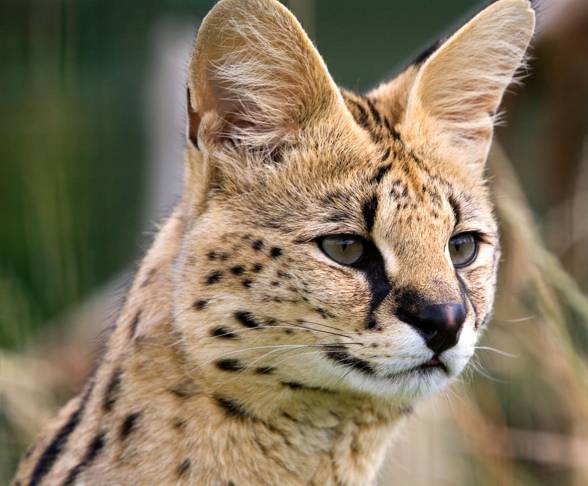
Characteristics
Appearance
It is a strong, medium-sized cat, with a relatively short tail and of not too much weight. Males are slightly heavier than females. The animal has a very slender stature and long legs. Thanks to them the serval is one of the tallest felids. The head, in relation to the body, is small, and the ears seem to be unproportioned to the head, they are rounded and closely set. The fur pattern is different in each individual, but usually there are black stripes along the head, neck, and back (from 2 to 4). On the back, the stripes transition into spots. The back of the ears is black, with a white “arrow” in the center.
Melanistic (black) servals resemble the black leopard, the melanistic leopard (Panthera pardus).
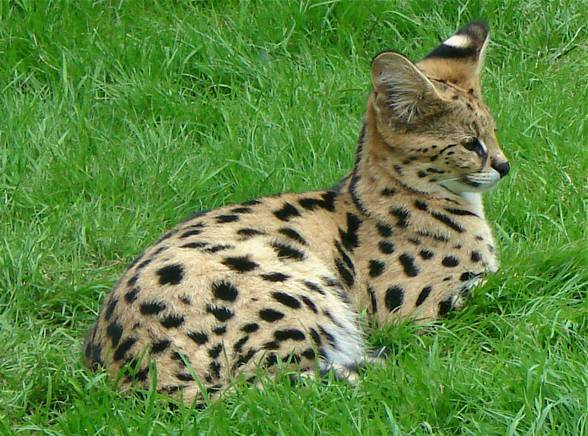
Legs – jumping ability and speed
The serval has the longest legs in relation to the body size among all felids. They are distinguished by significantly elongated metatarsal bones. The toes are also elongated and very helpful, because they facilitate catching prey.
The serval can leap for 3.6 meters (11ft 10 in) long and jump to 3 meters (9ft 10in) high. It develops the maximum speed of up to 80 km/h (50 mph). Therefore, it’s the fastest cat right after the cheetah.
This interesting cat is also distinguished by large ears and auditory bullae in the skull, which indicate incredibly acute hearing.
The serval is the most closely related to the caracal (Caracal caracal) and the African golden cat (Caracal aurata).
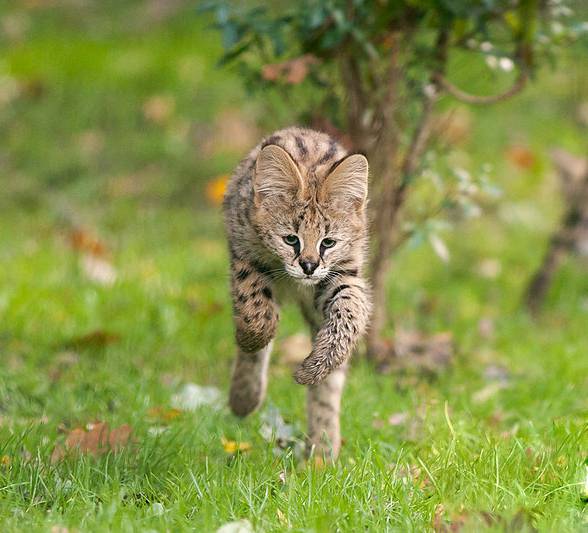
Diet and hunting
As an opportunistic predator (which hunts the easiest and weakest prey), the serval is willing to feed on rodents, hyraxes, insects, frogs, fish, and reptiles, but it can also hunt larger prey, for example, gazelle, springbok, or deer. The serval eats very fast, which often makes it choke and throw up food. Small prey is eaten in whole. In case of larger prey, the serval avoids eating its fur, hooves, beaks, feathers, and organs. However, it can digest minor bones. It captures birds while they fly, throws them on the ground, removes inedible parts, and consumes the rest.
Thanks to long legs and neck, the cat can observe its possible prey over tall grass of the savannah. The ears allow the cat to trace prey underground. When it detects the target, it starts to dig up the ground in search for burrows. While hunting, the serval can pause for 15 minutes to listen with closed eyes. It makes high, vertical leaps while capturing birds. Horizontally, it can leap to 3.6 meters (11ft 10 in) from a stationary position, landing exactly on its target with sufficient force to stun or kill it.
The serval is a very intelligent animal, because it can outsmart its prey and escape other predators. Before eating its prey, the serval “likes” to “play” with it for a while. In case when another predator wants to steal its prey, the serval can become very aggressive. Males, in this case, are more brutal than females.
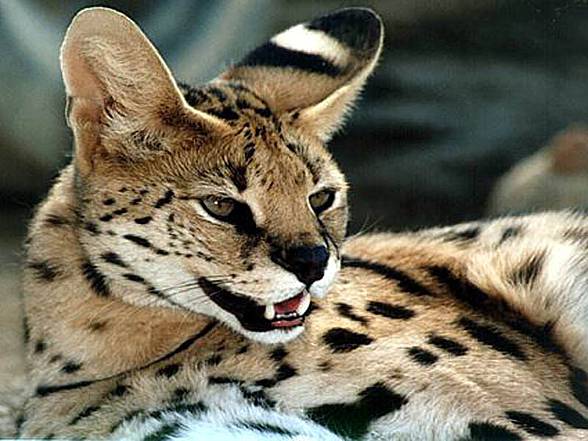
Temper and behavior
As befitted a cat, the serval is a solitary and nocturnal animal. During one night it can cross 3-4 km in search for food. The male marks its territory by spraying urine on prominent items, such as bushes. When two hostile individuals meet, they react to each other “allergically”: they flatten their ears, arch their backs, bare their teeth, and nod their heads vigorously. While attacking, the cats “hit” each other with long forelegs, growling and emitting sounds similar to squeaky barking.
The serval can purr, tweet, growl, bark, and meow.
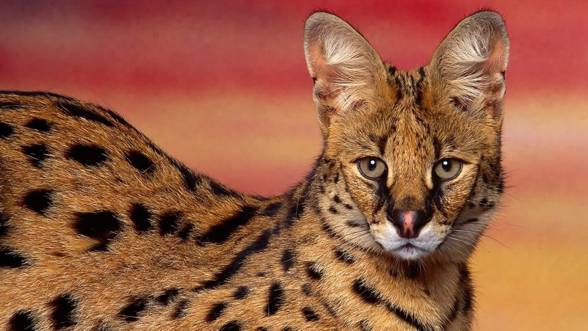
Reproduction
The mating season lasts about 4 days. Usually, kittens are born right before the peak mating season of local rodents. The serval can bring into the world several litters within a year, but it happens only in case when the previous litter doesn’t survive.
The gestation period lasts from 66 to 77 days, after which usually two kittens are born. The “only child” or 4 kittens are rare. Kittens are born among dense vegetation or covered places, such as abandoned dens of aardvarks. The young weigh about 250 g (0.55 lb), are blind, and covered with a layer of grey fluff. After 9-13 days they open their eyes, and they start to intake solids after about one month. They have their teeth during the 6th month of life. During the 1st year of life they leave their mother. They become sexually mature between 12th and 25th month of life.
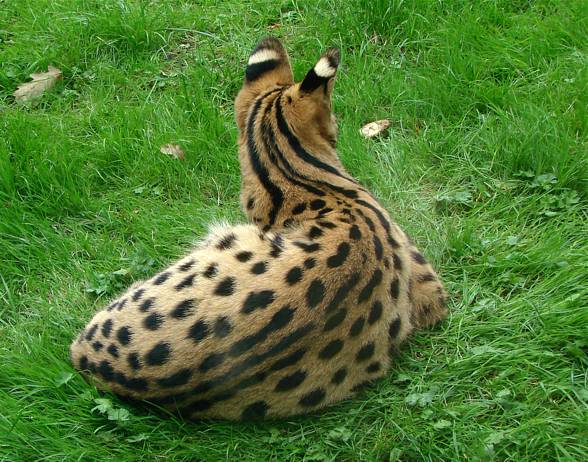
Detailed information / size
Serval (Leptailurus serval / Felis serval)
- Length: 59 – 92 cm (23 – 36 in)
- Height at shoulders: 54 – 66 cm (21 – 26 in)
- Tail length: 20 – 45 cm (7.9 – 17.7 in)
- Weight: males: 9 – 18 kg (20 – 40 lb), females: 7 – 12 kg (15 – 26 lb)
- Speed: to 80 km/h (50 mph)
- Leaps: to 3.6 m (12 ft) long, and jumps to 3 m (7 to 10 ft) high
- Lifespan: about 10 years in the wild, to 20 years in captivity

Serval – interesting facts
- The serval can climb and swim, but it does it rarely.
- Wild white servals haven’t been documented, but there have been 4 such individuals observed in captivity. One of them was born in Canada at the beginning of 1990s, but it died after 2 weeks.
- Although it is able to hunt a large animal, as many as 90% of its menu consists of animals of the weight lower than 200 g (0.44 lb).
- Thanks to very long legs the serval can develop the speed up to 80 km/h (50 mph).
- It can jump vertically to 2-3 meters, to catch a bird.
- The serval is an effective killer; it hunts with 50% effectiveness. Leopards are successful in 38% cases, lions – in 30%.
- Females inhabit territories of 3.7 – 7.6 km2 (1.4 – 2.9 mi²) or 9.5 – 19.8 km2 (3.7 – 7.6 mi2), depending on food resources, while males “appropriate” territories of 11.6 – 31.5 km2 (4.5 – 12.2 mi2)
- The number of servals has decreased because their habitats have been settled by humans, and they have been hunted for their beautiful furs. The serval has been entered into the Washington Convention to Annex II, which means that nowadays it isn’t endangered, but it can go extinct in the future, unless the population is thoroughly controlled.
- The serval can purr, tweet, growl, bark, and meow.
- The cross-bred of the serval and domestic cat resulted in a new cat breed – the savannah cat. Now it is the largest domestic cat (even larger than the maine coon) and the most expensive one.
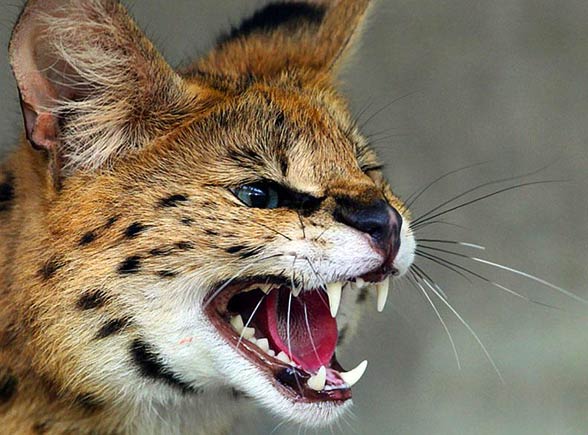
Recommended
- Persian leopard
- Amur leopard
- Siberian tiger
- Bengal tiger
- Sumatran tiger
- Indochinese tiger
- Malayan tiger
- South China tiger
- Tigers
- White tigers
- Lions
- White lions
- Lion vs tiger
- Liger
- Ocelot
- Animal fights
- American lion
- European cave lion
- Smilodon – Saber-toothed tiger
- Fights of animals
- Big cats
- Black panther
- Leopard
- Snow leopard
- African Lion
- Fastest animals
- Fastest birds









